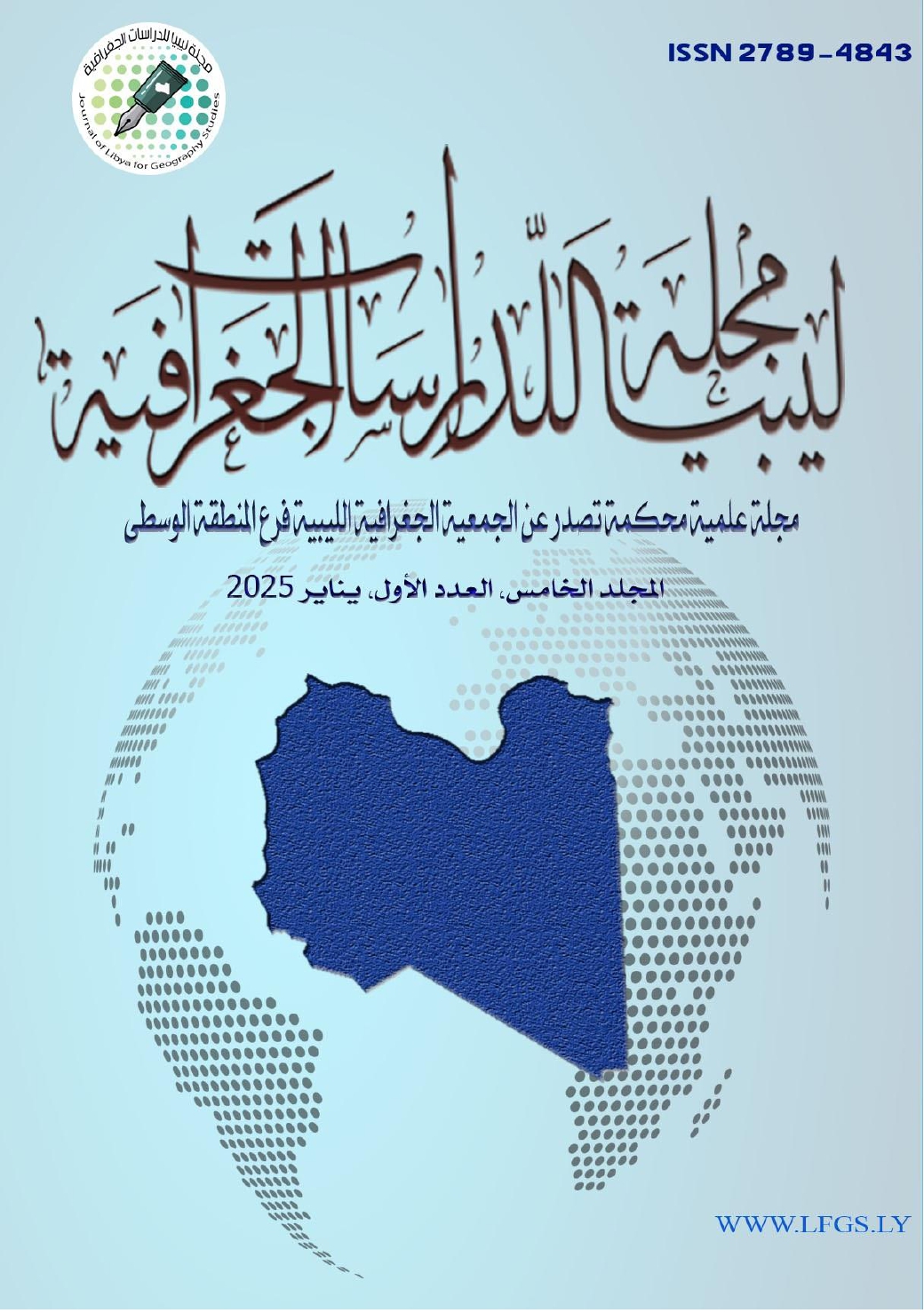Forest environments in Morocco and the challenges of risk management
DOI:
https://doi.org/10.37375/jlgs.v5i1.3122Keywords:
c, risk, fires, management, reforestation, MoroccoAbstract
Morocco has a rich and diverse forest cover, which plays an effective role in achieving the country's economic and social development and maintaining the balance of forest ecosystems in general. This natural cover faces a number of challenges and constraints as a result of the combination of several factors, including drought, which is mainly caused by the phenomenon of climate change that the planet is witnessing, in addition to random and irrational human intervention in dealing with the forest. These factors and others have negatively affected the development of the national forest cover, which has begun to decline, which necessitated the search for effective and efficient solutions within the framework of a national forest management strategy 2020-2030 with the aim of preserving the balance of the Moroccan forest and ensuring its sustainability. This article aims to shed light on the status of the forest cover in Morocco and the risks that threaten it, highlighting the efforts made by the state to manage various risks, and evaluating the effectiveness of these efforts in preserving the national forest heritage and protecting it from all factors of deterioration.
References
-الطاهر، رشيد، (2021)، الإطار القانوني للجانب الزجري في المخالفات الغابوية،
journal d’économie, de management, d’environnement et de droit (JEMED), vol4, n°2, .
-المجلس الأعلى للحسابات، (2018)، التقرير السنوي حول تثمين وإعادة إحياء غابات الفلين.
-المجلس الاقتصادي والاجتماعي والبيئي، (2022)، النظم البيئية الغابوية بالمغرب: المخاطر والتحديات والفرص.
-المجلس الأعلى للحسابات، (2016)، تقرير حول تقييم تدبير الكوارث الطبيعية.
-المندوبية السامية للتخطيط، (2016)، مونوغرافية جهة الشرق.
-المندوبية السامية للمياه والغابات ومحاربة التصحر، (2016)، مشروع نجاعة الأداء برسم سنة 2016.
-الوكالة الوطنية للمياه والغابات، (2024)، بيانات إحصائية حول تطور الغطاء الغابوي بالمغرب.
-بنعيسى حنان وآخرون، (2022)، غابة المعمورة بين إشكالية التغيرات المناخية والضغط البشري وسبل التأقلم، مجلة العلوم الإنسانية والاجتماعية، المجلد6، العدد 12.
-ورياشي عبد الكافي، (2018)، ضمانات المشتبه فيه أثناء مرحلة البحث التمهيدي، دراسة مقارنة، الجزء الثاني، الطبعة الأولى، مكتبة الرشاد.
-وزارة الفلاحة والصيد البحري والتنمية القروية والمياه والغابات، (2020)، الاستراتيجية الجديدة "غابات المغرب" 2020-2030.
-Bechir A, diversité allozymique de peuplement de cyprès naturels et introduits au Maroc : conséquences pour la gestion des ressources, Ann.For.Sci, 61, 669-676, 2004.
-Belghazi B et al, la productivité des peuplements naturels de pin d’Alep dans la forêt de Tamga (haut atlas marocain), forêt méditerranéenne, t.XXI, n°4, 521-529, 2000.
-Ben said M, et al, état des connaissances sur la sapinière endémique du Maroc (Abies marocana Trab.) : acquis, lacunes et nouveaux axes de recherche, bulletin de l’institut scientifique de rabat, section science de la vie, n°46, 01-16, 2024.
-Charrouf Z, valorisation des produits de l’arganier pour une gestion durable des zones arides du sud-ouest marocain, actes du 4°colloque produits naturels d’origine végétale (Ottawa 26-29 mai 1998), 195-209, 1999.
-DPEFLCD (Direction Provinciale des Eaux et Forêts et de la Lutte Contre la Désertification de Chefchaouen), étude d’aménagement de la sapinière de la forêt de Talassemtane (Province de Chefchaouen), volume3, plan de gestion, 2012.
-Makrane I, potentialités forestières, dynamique végétale et gestion durable de la subéraie de Bab-Azhar et ses bordures (Moyen-Atlas septentrional) : Approche géosystémique, Thèse de doctorat en géographie, Faculté des Lettres et des Sciences Humaines, Université Abdelmalek Essaâdi, Tétouan, 2015.
-Mhirit O, le cèdre de l’Atlas à travers le réseau silva mediterranea « cèdre », bilan et perspectives, forêt méditerranéenne, t.XX, n°3, 91-100, 1999.
المواقع الإلكترونية:
http://www.eauxetforets.gov.ma/AccueilAR/SitePages/Forets-En-Chiffres.aspx














